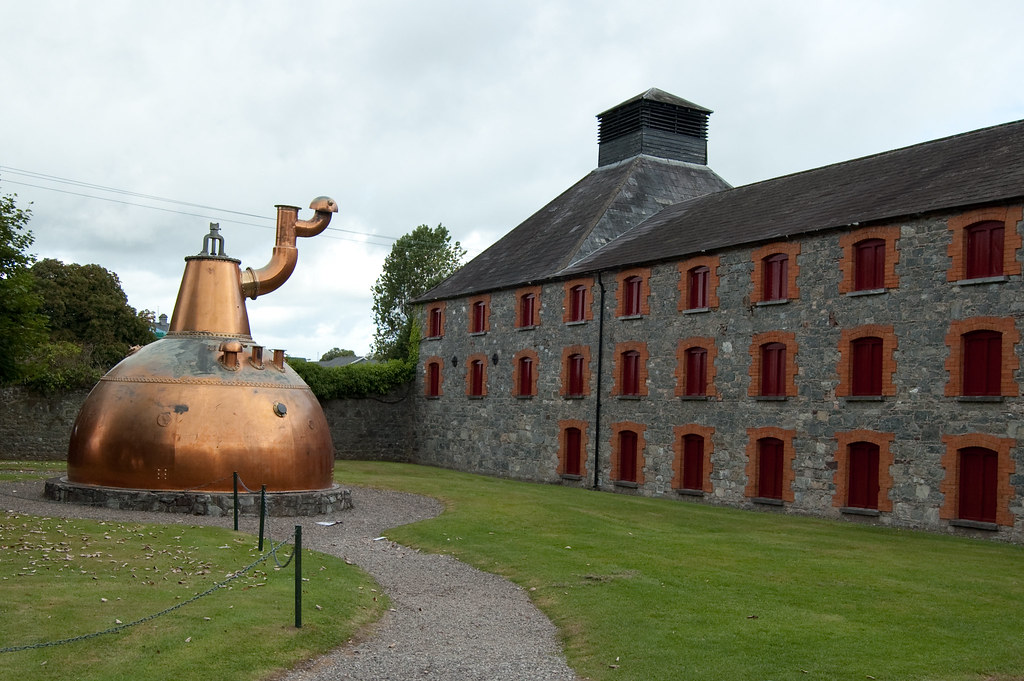

By Asmita - Aug 05, 2025
Kentucky's whiskey industry, valued at $9 billion, is facing a severe crisis as three major distilleries file for bankruptcy within just eight months. Contributing factors include overproduction, declining demand, changing consumer preferences, rising costs, and trade tariffs. Bankruptcies are sending shockwaves through an industry that employs 23,000 and has a workforce collectively earning about $1.6 billion in annual wages.

Jameson Distillery Midleton via Flickr
LATEST
Kentucky’s legendary whiskey industry, valued at $9 billion, is experiencing its most profound crisis in decades. Within just eight months, three significant distilleries—Luca Mariano Distillery, Garrard County Distilling, and Kentucky Owl—have filed for bankruptcy, sending shockwaves through the state’s economic backbone. Each of these distilleries accumulated tens of millions in debt, with LMD Holdings, the parent of Luca Mariano, owing over $25 million, and Garrard County Distilling facing liabilities just shy of $26 million. Kentucky Owl, operated by Stoli Group, also entered bankruptcy, citing both market downturns and a paralyzing cyberattack that disrupted operations.
The causes are multifaceted and extend far beyond simple mismanagement. Over the last two decades, Kentucky’s bourbon boom spurred rapid expansion across the region. Distilleries raced to build new facilities and ramp up production, filling more than 3.2 million barrels in 2023 alone. However, by 2024, American whiskey sales dropped by 1.8% to $5.2 billion, revealing a growing disconnect between expanding supply and falling demand. The changing landscape has prompted established companies such as Brown-Forman and Diageo to slash hundreds of jobs and idle plants, causing wide-reaching impacts on the industry’s 23,000-strong workforce that collectively earns about $1.6 billion in annual wages.
Several macroeconomic and cultural trends have converged to create a perfect storm for Kentucky whiskey producers. Younger consumers, particularly those in Generation Z, are increasingly steering away from traditional bourbon in favor of canned cocktails and low-alcohol or non-alcoholic options. Inflation has tightened consumer spending and raised production costs, making it more difficult for distilleries to operate profitably. Additionally, tariffs imposed during ongoing trade disputes have cut into export revenue, further squeezing margins for American whiskey brands. The surpluses created during the “bourbon bubble” now result in a glut of 14.3 million barrels aging in warehouses across the state—double the population of Kentucky itself.
The human toll is palpable. Garrard County’s $250 million distillery, which once symbolized new growth and opportunity, shut down just months after opening, leaving its 60 employees facing indefinite suspension and uncertain futures. Workers like Brad Luttrell, previously enthusiastic about their roles, have had to seek new employment as hopes for reopening fade. Asset sales, workforce reductions, and operational retrenchment are now commonplace, yet some industry leaders remain optimistic, viewing bankruptcy filings as opportunities for reorganization and reinvention. Nonetheless, industry analysts and local officials warn that a fundamental transformation will be necessary if Kentucky whiskey is to weather this turbulent period.